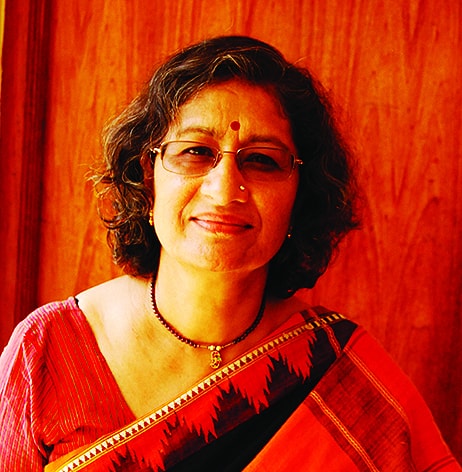
Four decades back, Pavithra Muddaya and her mother started reviving antique crafts and preserving c. That journey is documented in ‘The Story of Vimor’, an exhibition at India International Centre.
Vimor — which means pure in Indonesia, as does pavithra — is the name of the boutique in Bengaluru that sells handloom saris and was started back in the 1970s by the mother-daughter duo.
The exhibition documents Vimor’s journey of reviving and supporting handloom weavers. It showcases old textile samples and photographs, antique saris along with the revived version of the saris, and the stories of the livelihoods and success of the weavers.
Pavithra revives forgotten designs and motifs and also preserves antique sari weaving techniques. She encourages and trains small town weavers to carry forward the ancient craft of sari weaving. “I mentor the weavers step by step after understanding their skills,” says Pavithra. They provide their own interpretation in reviving the saris, yet maintain the essence of the design. This often involves simplifying the techniques and designs so that is easy for the weavers to adapt as well as for people wearing it.
Under her guidance, most of the weavers have grown from a single loom to over 20 looms and now supply handlooms to the rest of the country. “Some of them now visit us in swanky cars,” she adds proudly.
The main aim is to preserve the textile heritage that impacts both the weavers and the wearers. “I don’t want it to remain fossilised. It has to tell today’s story, inspired by yesterday’s story,” says Pavithra.
A lot of her clients bring their grandmother’s saris to her for revival as the family has an emotional connect with the garment. She tries to recreate it in such a manner that it can be worn by the younger generation. Pavithra wants to do away with the elitist concept often attached with handloom saris. “It’s part of India’s heritage. Everyone should have respect and pride in your inheritance,” she says.
From the simplest cotton to heavy silk, everything that has been recreated has been put together for the exhibition. “The inspiration is drawn from old textile shows. It’s a story of how we have made a difference in people’s lives,” she concludes. The exhibition is on display from July 12 to 17.
Former Delhi CM Kejriwal criticises Centre, Delhi govt over worsening air pollution, alleges AQI manipulation
Delhi Police raids Nangloi unit producing fake engine oil, seizes over Rs 1 crore worth…
Mukesh Sharma reimagines digital components as living matter in his solo exhibition ‘Decoding Digital DNA’
Nine accused were arrested in coordinated raids as police uncovered organised networks supplying mule bank…
Nearly 1.57 lakh PUC challans issued in two months as Delhi steps up GRAP enforcement…
A five-year study shows men in Delhi inhale more particulate pollution than women, with exposure…